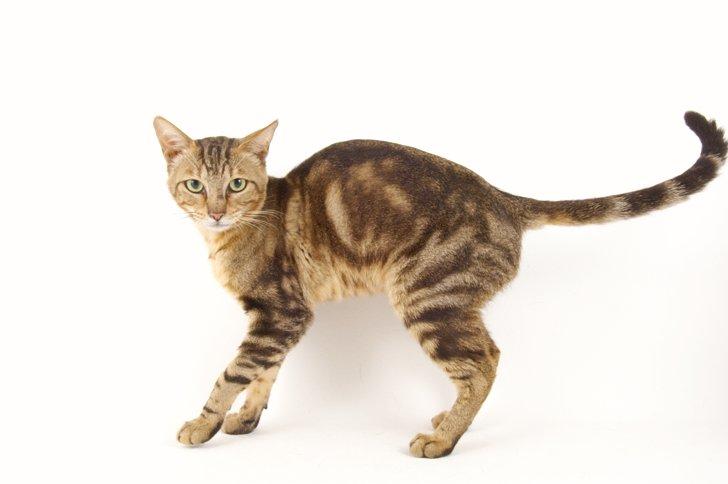Introduction
Rare cat breeds offer a fascinating and unique world of feline companionship for those seeking a distinctive and extraordinary addition to their households. These breeds, often characterized by their uncommon appearances, temperaments, or histories, capture the imagination of cat enthusiasts and provide a special connection with the world of domesticated cats.
From the sleek and wild-like Sokoke to the elegant and regal Burmilla, each rare cat breed brings its own charm and allure. In this exploration, we delve into the captivating realm of cat breeds, uncovering their origins, characteristics, and what makes them stand out in the diverse world of feline companions.
List of Rare Cat Breeds
There are many rare and unique cat breeds around the world, each with its own distinct characteristics and appearance. Here are some rare cat breeds:
- Sokoke: This breed originated in Kenya and is known for its distinctive short coat with a wild appearance. They are active and friendly cats.
- Korat: Originating from Thailand, Korats are known for their striking blue-grey coat and large green eyes. They are considered good luck in Thai culture.
- Peterbald: This is a relatively new breed from Russia, known for its lack of fur or a very fine coat. They are affectionate and sociable cats.
- Toyger: Toygers are bred to resemble miniature tigers. They have a striking coat with dark, bold stripes on an orange background.
- LaPerm: LaPerms have curly coats and are known for their friendly and affectionate nature. They originated in the United States.
- Scottish Fold: While not extremely rare, Scottish Folds are known for their unique folded ears. They are sweet-natured and come in various coat colors.
- Selkirk Rex: These cats have a curly coat, and their breed was developed in the United States. They are known for their gentle and laid-back personalities.
- Burmilla: A crossbreed between Burmese and Chinchilla Persian cats, Burmillas have a beautiful silver coat and are known for their sweet temperament.
- Curl: American Curls are named for their distinctive curled-back ears. They are friendly and playful cats.
- Khao Manee: Originating in Thailand, Khao Manees are all-white cats with striking blue or odd-colored eyes. They are considered lucky in Thai culture.
- Minskin: These small cats have a combination of fur and bare skin, with short legs. They are friendly and outgoing.
- Oriental Shorthair: While related to the more common Siamese, Oriental Shorthairs come in a wide variety of colors and patterns.
- Chartreux: These cats have a robust build and a blue-grey coat. They are known for their hunting skills and gentle temperament.
Remember that the rarity of a breed can vary by region and availability. If you’re interested in a specific rare breed, it’s important to research and find a reputable breeder who prioritizes the health and well-being of the cats. Adoption is also a great option, as you may find rare breeds in shelters or rescue organizations.
FAQs
Certainly, here are some frequently asked questions (FAQs) about rare cat breeds:
- What defines a rare cat breed?
A rare cat breed is one that is not commonly found and has a limited population compared to more popular breeds. - Why are some cat breeds considered rare?
There are several reasons for a breed to be rare, including limited geographical distribution, recent development, or specific characteristics that are not widely sought after. - How can I find a rare cat breed?
You can start by researching reputable breeders who specialize in the specific rare breed you’re interested in. Additionally, check local animal shelters and rescue organizations, as rare breeds can sometimes be found there. - Are rare cat breeds more expensive?
Rare cat breeds can be more expensive than common breeds due to their limited availability and the cost associated with responsible breeding practices. However, prices can vary widely. - What should I consider before getting a rare cat breed?
It’s important to research the breed’s characteristics, temperament, and care requirements to ensure it’s a good fit for your lifestyle. Also, consider the ethical implications of buying from a breeder versus adopting from a shelter. - Are rare cat breeds more prone to health issues?
Some rare breeds may have specific health concerns due to their genetic makeup or characteristics. It’s crucial to choose a reputable breeder who conducts health testing and cares for the well-being of the cats. - Can I show a rare cat breed in cat shows?
Depending on the breed’s recognition by cat breed registries and associations, you may be able to show a rare cat breed in cat shows. Check with the relevant organizations for eligibility. - What resources are available for learning about rare cat breeds?
You can find information about rare cat breeds from cat breed registries, breed-specific clubs, books, and online resources. Reaching out to breed enthusiasts and attending cat shows or exhibitions can also provide valuable insights. - Do rare cat breeds make good pets?
Rare cat breeds can make excellent pets, but their suitability depends on your lifestyle and preferences. Research the breed’s temperament and energy level to ensure it matches your expectations. - Are there any conservation efforts for rare cat breeds?
Some cat breeds are actively conserved to prevent them from becoming extinct. Breed clubs, enthusiasts, and conservation organizations may work to promote and preserve these breeds.
Remember that when considering a rare breed, it’s essential to prioritize responsible breeding practices, proper care, and the well-being of the cat. Additionally, adopting from shelters and rescue organizations is a commendable option, as it provides a home for cats in need, including rare breeds.
Here is the list of rare dog breeds
